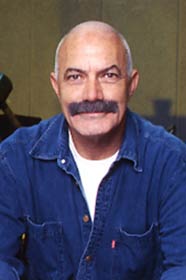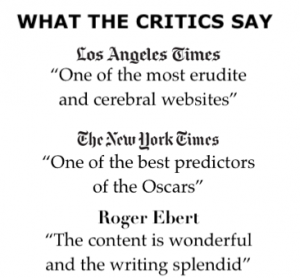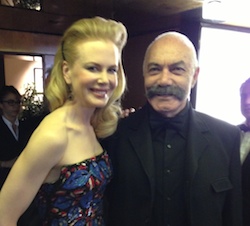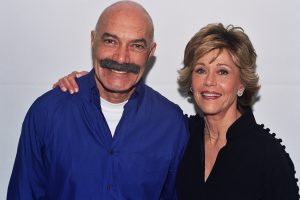Louie Psihoyos is the director of “The Cove,” a new documentary being released by Roadside Attractions on July 31, 2009.
Q: What drew you to want to film Ric O’Barry and his work in Taiji?
A: I was curious at first about why he wasn’t allowed to talk at this conference. Then, when I found him, he explained that he was going to talk about this secret cove in Japan where the dolphin traffickers select most of the dolphins for dolphinariums and parks. He told me they were slaughtering the ones they didn’t choose and using them for school lunch programs. I couldn’t imagine any civilization killing dolphins and Richard invited me along the following week to see Taiji, the little town with this big secret.
Q: What was Taiji like?
A: The town was like out of a Steven King novel – outwardly the whole town was about the reverence and respect and love of dolphins and whales, but what was happening in the secret cove belied another story, one I was determined to get at.
The secret cove is a natural fortress, protected on three sides by steep cliffs. The entrance on one side is protected by a series of high spiked gates with barbed wire and razor ribbons, and there are two tunnel entrances protected by guards and dogs. After a tour of the town with Richard, I contacted the Taiji mayor’s office and the dolphin hunters’ union – I wanted to get their side of the story and I wanted to do the story legally. I had noticed that I had picked up a tail; I had 24-hour police surveillance while I was in town. But the town was not interested in cooperating – they were making too much money with the captive dolphin industry to jeopardize it by having a journalist milling about. The mayor told me that I could get hurt or killed by getting too close to the dolphin hunters or the secret cove.
The cove, oddly enough, is in the middle of a National Park right in the center of town, between city hall and the whale museum.
Richard told me that to penetrate the secret cove you would need to get a Navy Seal team, and that is pretty much what I did, but my team was more of an “Ocean’s Eleven” team.
Q: It is a really eclectic group of characters. How did you put the team together?
A: I enlisted my friends Mandy Rae-Cruickshank and Kirk Krack to help us set underwater cameras and hydrophones. Mandy is an eight-time world champion freediver. She can hold her breath for 6 and a half minutes and dive down to almost to 300 feet and back on her own power. Her husband, Kirk, is also a freediver. A former photo assistant of mine went on to become the head mold maker at ILM, Industrial Light and Magic, Lucas’ 3-D division and they helped us make fake rocks to hide high definition cameras and microphones. An electronics expert formerly with the Canadian Air Force helped us hot rod the hard drive cameras with larger drives powered by expedition batteries used for climbers on Mount Everest. He also helped us make unmanned drones so we had aerial support and video – a remote controlled helicopter with a gyro-stabilized high definition camera below it as well as a blimp with a remote controlled camera.
Some pirate friends from the islands helped me place the cameras and many nights we were in blinds in full camouflage and face paint. We foiled the guards and police many nights by the use of high-definition military grade thermal cameras to scan the hills for movement, and an assortment of other diversionary techniques.
Q: What were your biggest challenges during filming?
A: THE COVE was definitely not your normal film production. Most of our work happened in the middle of the night, under cover, and our biggest challenge of all was simply trying to avoid being killed or arrested and put in jail for months if we were caught.
There were other challenges, too. Early on in the formation of our non-profit film company, I met Steven Spielberg and he advised me from his work on Jaws to never work on boats or with animals because of the unpredictability and high cost. Well, we used a lot of boats in the making of THE COVE and we had to work with a lot of large uncooperative animals. It was a first-time director’s nightmare.
Q: Did making THE COVE change you?
A: I have been a vegetarian, or rather a pescatarian, for 20 years. I eat fish but nothing that walks. Now, I don’t eat any fish very high up on the food chain because I learned from the making of this movie that I have mercury poisoning – very high levels of mercury from eating apex predators, fish at the top of the food chain like tuna, marlin, striped bass and grouper.
My attitudes about animals have changed considerably since making this film. My sensitivity to all animal life has been heightened because once you have your eyes open to their plight it’s difficult to close your heart up again. Dolphins have larger brains than us, there are more folds for neurons, they have an extra sense – sonar – and they are the only wild animals known to come to the rescue of humans. They have been legendary for extraordinary feats of compassion since man had the ability to write. They have always come to our rescue and I feel that it is about time somebody tried to rescue them.
Q: What is the most surprising thing you discovered while making this film?
A: There is a systematic cover-up of mercury and dolphin hunting issues in Japan. The Japanese trust their government. But the government does not want them to know basic information that would affect their health, especially that dolphin meat is many more times toxic than their own country’s health standards allow. Corruption is rampant and people are profiting from misinformation.
Q: Have there been any new developments since you left Taiji?
A: Dolphin meat used to be part of school lunch programs there. That stopped this year. Ric O’Barry and our organization, the Oceanic Preservation Society, had a hand in that. Our work with a toxicity expert there eventually reached several Taiji town council members, who had their own children in the school system, and who did their own tests on dolphin meat. These confirmed our findings. School children across Wakamaya prefecture are no longer fed toxic dolphin meat for school lunch programs. As a result, the head of the fisheries, Hideki Moronuki, who had set the quotas for dolphins and porpoises and whales, has been fired. But the hunt for dolphins is still going on. We hope awareness will shut the dolphin drive down by next year, once the Japanese people learn about it.
Q: Can you tell us more about the Oceanic Preservation Society and how it was created?
A: The founder of the Oceanic Preservation Society is the inventor and venture capitalist Jim Clark, a modern day Zelig who built three groundbreaking industries from scratch. He worked himself out of poverty and in college he helped set up the computer systems that sent man to the moon. As a professor at Stanford, he invented the first 3-D graphics engine computer chip with Silicon Graphics, the first commercial internet browser with Netscape. After he discovered he had a rare blood disease, he created WebMd, a portal that connects doctors and patients with the most recent medical and health information. At the forefront of innovation his whole life, he has also been an avid diver and sailor, traveling to the world’s best preserved reefs but also witnessing the collapse of the oceans in his lifetime. He founded OPS to create films and stills to raise awareness of the plight of the oceans, a demise that also jeopardizes humanity, as we derive 70% of our protein from seafood, a diminishing and increasingly and polluted resource.
Q: What do you hope audiences will take away from THE COVE?
A: First, I hope people stop taking their children to dolphin amusement parks and swim with dolphin programs – having intelligent sentient animals perform stupid tricks for our amusement is a form of bad education for our children. Secondly, I hope the Japanese people stop killing dolphins for food because, ethical reasons aside, all dolphin meat is toxic and not fit for human or animal consumption. Third, dolphins and whales are polluted mainly because of the dumping in the ocean of toxins from man’s activities. The burning of fossil fuels, particularly coal, contributes to most of the build-up of mercury in the environment so getting us off coal is important in saving the oceans. So, at the OPS headquarters we have 117 solar panels that now generate 140% of our energy needs; and we have two electric cars that are totally powered from energy generated from the sun. Everybody can help in these ways.










